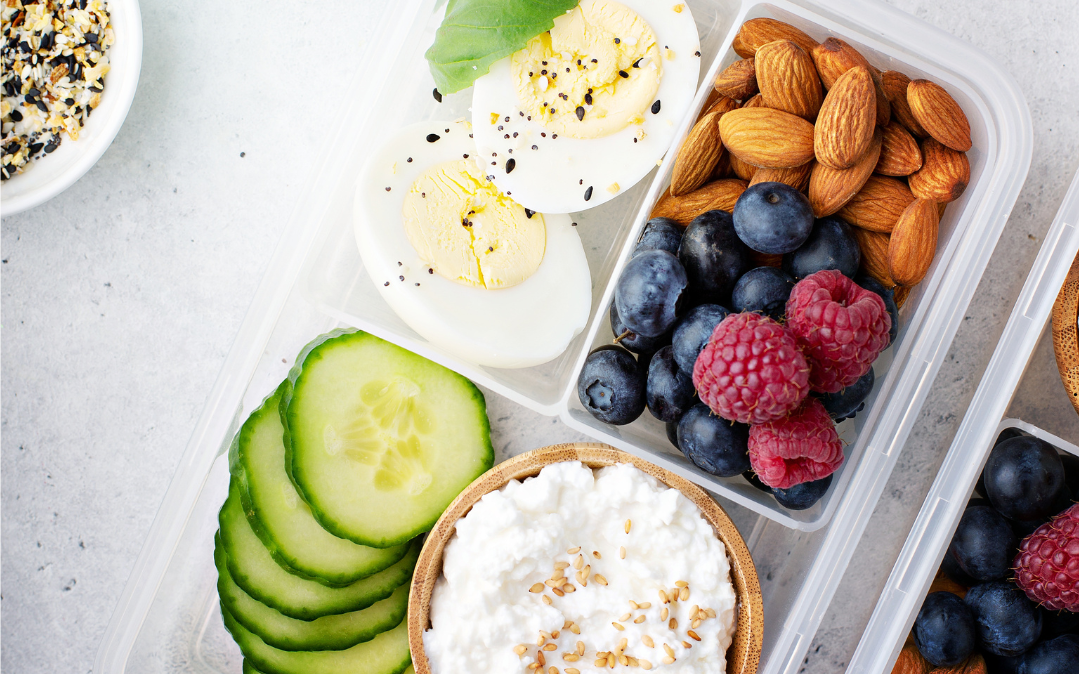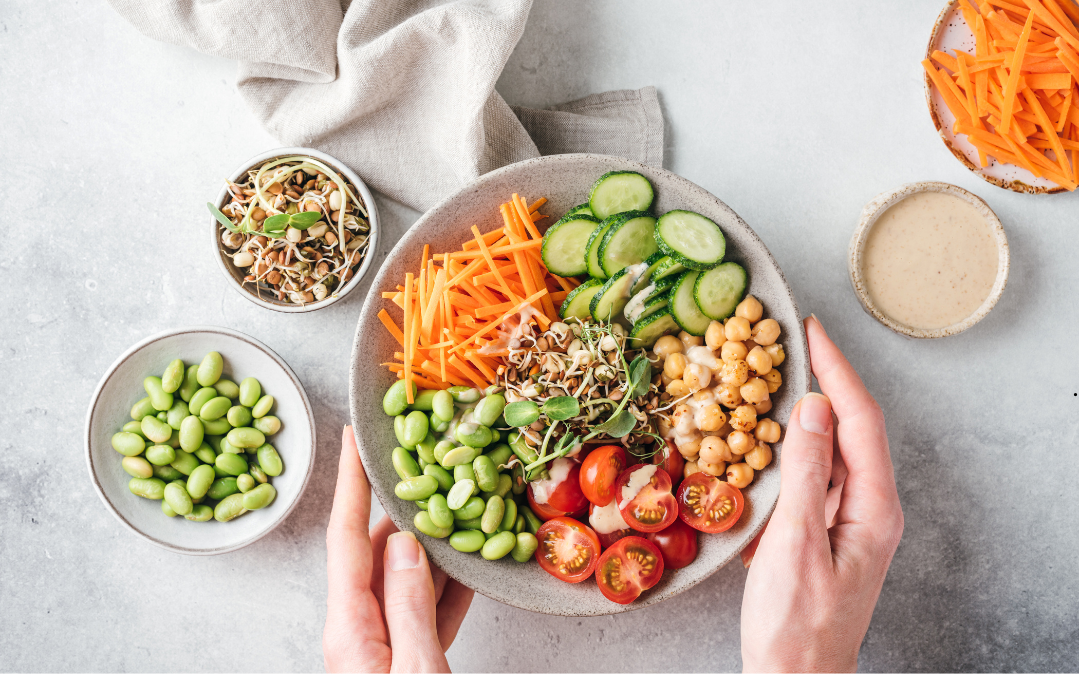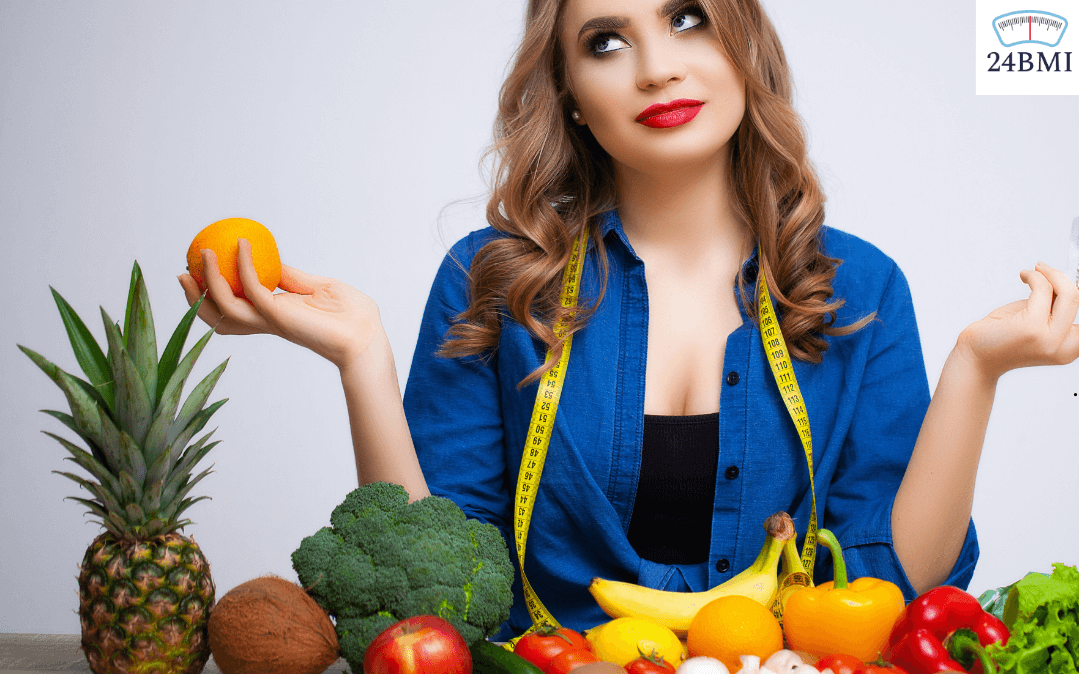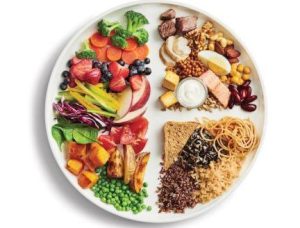Dr. Richa Bhatia
All You Wanted to Know About
Portion Size/Serving Size
It is important to be aware of portion sizes, as eating too much (or not enough) of any type of food can increase your risk of health problems.
- Serving is the amount of food that you are supposed to eat during a meal or snack.
- Portion is how much food you choose to eat at one time, whether in a restaurant or in your own kitchen. A portion is 100% under your control.
Many foods that come as a single portion actually contain multiple servings. Suggested Serving Size is often mentioned on the food labels.
Carbohydrates
| Type of food | Portion Size | What does this look like? |
| Bread | 35g | 1 medium slice |
| Roti/Chapati | 30g | 1 Chapati or 1/3 cup cooked rice |
| Rice/Pasta (boiled) | 75g uncooked (150g cooked) | Two to three tablespoons |
| Potatoes (boiled/baked) | 150g | 1 medium size |
| Breakfast cereals | 30g | Three tablespoons |
Fruit and vegetables
| Type of food | Portion Size | What does this look like? |
| Apple / pear / orange / banana | 80g | 1 medium size |
| Grapes | 80g | 10-12 or handful |
| Plums/apricots/kiwis | 80g | 2 fruits |
| Cucumber/Green-Salad | 100g | Cereal bowlful |
| Peas/ carrots/ sweetcorn/ mixed vegetables | 100g | ½ Katori Cooked Vegetables |
Sugar
| Type of food | Portion Size | What does this look like? |
| Sugar/Honey | 5g | 1 teaspoon |
Oils
| Type of food | Portion Size | What does this look like? |
| Butter | 5g | 1 Tablespoon |
| Oil | 5ml | 1 Tablespoon |
| Nuts/Seeds/Raisins | 15g | 1 Tablespoon |
Protein
| Type of food | Portion Size | What does this look like? |
| Pulses/Beans (lentils, chickpeas, kidney beans) | 150g | 1 small bowl (cooked dal) |
| Soya/Tofu | 100g | 4 tablespoons |
| Unsalted nuts or nut butter | 30g | 1 handful or Tablespoon |
| Eggs | – | 2 medium |
| Cooked meat/chicken | 90g | A deck of cards |
Milk Products
| Type of food | Portion Size | What does this look like? |
| Milk | 100-200ml | One glass |
| Curd | 100g-150g | 3 tablespoons |
| Cheese (hard) | 30g | A small matchbox-sized piece |
Suggested No. of Servings
People often have more than one portion of a food type at each meal. A sandwich with two slices of bread with two teaspoons of butter would be two portions of carbs and two portions of fats. Serving size is a guide. It’s not a recommendation of how much to eat or drink. Portion sizes of food prepared outside the home have increased significantly over the years. Here are the recommended numbers of servings of each food group for adults.
- Foodgrains: 3 – 5 servings daily
- Vegetables: 5 servings daily
- Fruits: 3-4 servings daily
- Proteins: 2 servings daily (including beans, peas, lentils, nuts & seeds,)
- Milk Products: 2-3 servings daily
- Fats and Oil: 2-3 servings daily
Portion Distortion
Average portion sizes have grown so much over the past 20 years that sometimes the plate arrives and there’s enough food for two or even three people. Growing portion sizes are changing what we think of as a “normal” portion at home too. This is called portion distortion. Increased portion sizes are thought to contribute to over-eating.
Tips to control Portion Sizes
To control your portion sizes when you are eating at home, try the following tips:
- Serve food on smaller plates. Use a salad plate instead of a dinner plate. Measure portion sizes using cups/katori or spoons.
- Use your plate as a portion guide. Half of your plate should contain non-starchy vegetables. Divide the other half between whole grains and lean protein.
- Keep serving dishes on the kitchen counter so you will have to get up.
- Substitute lower-fat varieties of food. Instead of whole-fat cheese, sour cream and milk, buy low-fat instead. Use half the amount you would normally use to save even more calories.
- Eating quickly makes you less aware of getting full. As your brain can take around 20 minutes to register that you are full after eating, slowing down can reduce your total intake.
- Eat at the dining table. Practice slow and mindful eating. When you snack in front of the television, you will be distracted enough that you may eat too much.
- If you are hungry between meals, eat a healthy high-fiber snack; such as a piece of fruit, salad or a cup of home-made soup.
To control your portion sizes when eating out, try these tips:
- Avoid buffet-style restaurants where it’s easy to overindulge.
- Instead of a medium or large, ask for the smallest size. By eating a small burger instead of a large one, you will save 200 calories.
- Check serving size and calories on nutrition labels. Do not eat directly from the packet.
- Share your meal. Some meals have portions that are enough for two or more people.
- Eat one slice of pizza instead of two, and order a small instead of a medium.
- Fill up with lower calorie foods. Order a salad, fruit, or a cup of clear soup. It will make you eat less of high calorie meal




